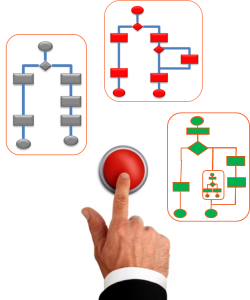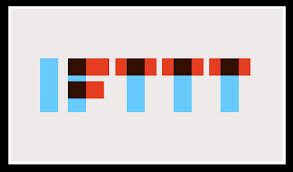It looks like our homes could soon be invaded by a swarm of buttons. Earlier this year (2015) we had the launch of Amazon dash and now we have flic. Flic takes dash a step further and is a wireless smart button that can be quickly programmed to let you play music, make calls or even order a pizza, all at the press of a button. What dash and flick have in common is that with the press of a button the user is triggering or starting a process. With dash it is the process of placing and executing an order for a consumable product from the Amazon store or in the case of flic trigger a food delivery process.
There are other companies out there such as IFTTT looking to simplify how we execute day to day processes and optimize how we interact with mobile applications. In fact it is possible to connect Flic to IFTTT and at the press of a flic button post a Facebook or twitter update. Both dash and flic are obviously Internet of Things (IoT) devices. What they begin to illustrate is the critical relationship between the IoT and process. There is no point in smart devices collecting data and monitoring your environment if we cannot rapidly take action on insights obtained.
Yet dash and flic don’t have a long term future. Why do we need buttons to place orders or trigger processes when we could use our voice? Today, three of largest global IT organizations — Apple, Google and Microsoft — offer voice recognition software. Apple was the first mover with Siri. Google followed with its own natural language user interface, Google Now, and finally Microsoft came to market with Cortana. Why do we have this sudden interest in voice recognition? The answer is the IoT.
With the iOS 8 operating system, Siri became completely hands free, with the “Hey Siri” command replacing initiation of Siri via the home button. In addition, Siri began to integrate with the Apple IoT HomeKit features. At iOS 9 Apple have taken Siri capabilities further putting new functionality into the HomeKit, including smarter Siri controls and support for new device types. Siri and thus voice recognition is a key part of the Apple IoT strategy with voice commands being used to trigger simple processes such as dimming the lights or adjusting the thermostat. It does not take a great leap of the imagination to expect that we will soon be able to ask Siri to book a flight, a meal at a restaurant or to transfer money into a bank account, all hands free and without accessing an app or pressing a button.
So while flic and the Amazon Dash button may have a limited shelf life they do point towards emerging methods of process initiation that will eventually coalesce around voice. In fact Amazon, as well as having the Dash Button, also offer a Wand device that uses voice recognition to place order requests. With so many potential IoT devices, sensors and services, voice control provides a simpler, quicker and more convenient method of interaction with the IoT rather than an app, a UI or a button.


